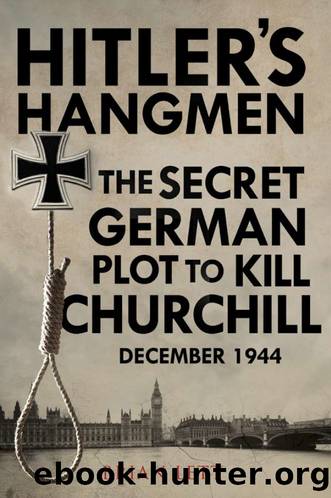Hitlers Hangmen by Brian Lett

Author:Brian Lett
Language: eng
Format: epub
Publisher: Big Sky Publishing
Published: 2021-01-15T00:00:00+00:00
Chapter 15
Camp 21 at Comrie
British Colditz, Nazi Hell
Even with 'White' anti-Nazi Senior German Officers, the German prisoner of war camps were generally run internally by pro-Nazi, 'Black' prisoners. Nazi culture and discipline was to be maintained at all times, Nazi songs were regularly sung en masse by the German prisoners, and the Nazis imposed a savage discipline on those who did not behave in the way that good Nazis should. Punishments of various kinds, including beatings, were commonplace. They were very difficult to prevent, since the prisoners spent much of their time inside their accommodation unsupervised. Usually the Nazis conducted 'disciplinary proceedings' in the early hours of the morning, in Vehmic-style 'courts'. If the victim was warned of his fate, or a White Senior Officer found out in time, a request could be put in for a transfer to an anti-Nazi camp, but there were dangers even in that. A 20 May 1944 memorandum reports that approximately 600 German prisoners had been transferred to a special camp because their safety could not be guaranteed in the camps where they were.1 That was before the flood of prisoners that followed the D-Day invasion of Normandy had begun.
Camp 21, Cultybraggan, Comrie, Scotland was regarded as the British equivalent of Colditz â it was a high-security camp, from which escape was extremely difficult. The camp was situated in a fairly remote part of Scotland, and was purpose-built, constructed in 1941. It stood (and still stands today) on a plain surrounded by mountains and moorland. It had the security advantage that it had been constructed on ground that had been raised and levelled. The soil was therefore loosely packed, and totally unsuited to tunnelling. Tunnels were attempted, but nobody tunnelled out of Comrie Camp. However, it was always very difficult to control what the prisoners did amongst themselves, and to each other. The camp was split into four individual compounds, each wired off from the others, and each nominally a separate community. Each had a Senior Officer, and each hut had an appointed Leader.
In the autumn of 1944, intelligence was gathered as to what was going on in Camp 21. In mid-December 1944, a memorandum already cited was circulated by MI19. It read:
'In the officers' sections of [Compounds] B and C at Comrie, the SS and paratroops had organised a regular system of spying on other officers. In B, which was the worst, there was a sort of Vehmic organisation i.e. a secret police with executive powers. If, for instance, they recognised a man who had ever made an anti-Nazi remark, they maltreated him under cover of darkness. They were careful to note for punishment those who did not give the Nazi Salute. Their activities became those of organised terrorism. They had spies in all the huts and compiled lists of anti-Nazis, which were to be smuggled into Germany by means of exchanged Prisoners of War. There is a regulation in Germany that, if a Prisoner of War does anything against the Government, or
Download
This site does not store any files on its server. We only index and link to content provided by other sites. Please contact the content providers to delete copyright contents if any and email us, we'll remove relevant links or contents immediately.
| Belgium | France |
| Germany | Great Britain |
| Greenland | Italy |
| Netherlands | Romania |
| Scandinavia |
Room 212 by Kate Stewart(4721)
The Crown by Robert Lacey(4560)
Endurance: Shackleton's Incredible Voyage by Alfred Lansing(4478)
The Iron Duke by The Iron Duke(4103)
The Rape of Nanking by Iris Chang(4006)
Killing England by Bill O'Reilly(3893)
Joan of Arc by Mary Gordon(3769)
Say Nothing by Patrick Radden Keefe(3708)
I'll Give You the Sun by Jandy Nelson(3257)
Shadow of Night by Deborah Harkness(3163)
Hitler's Monsters by Eric Kurlander(3148)
Blood and Sand by Alex Von Tunzelmann(3045)
Mary, Queen of Scots, and the Murder of Lord Darnley by Alison Weir(3043)
Darkest Hour by Anthony McCarten(3011)
Margaret Thatcher: The Autobiography by Thatcher Margaret(2965)
Eleanor & Park by Rainbow Rowell(2929)
Red Famine: Stalin's War on Ukraine by Anne Applebaum(2807)
Book of Life by Deborah Harkness(2708)
The One Memory of Flora Banks by Emily Barr(2677)
